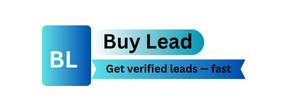SMS marketing offers a direct and highly effective way to connect with your audience. Its impressive open rates, often exceeding 98%, make it an indispensable tool for businesses. However, many wonder about the real investment required. Understanding SMS marketing pricing models is crucial. It helps businesses budget effectively. It also ensures they select the right service provider. This guide will demystify the costs involved. We will cover various factors that influence your final bill. Let’s dive into how SMS marketing costs are structured.
Decoding SMS Marketing Pricing Models: Pay-as-You-Go vs. Monthly Plans
SMS marketing pricing typically falls into two main categories. First, there’s the pay-as-you-go model. Here, you purchase credits or messages upfront. These credits are then deducted as you send texts. This model is ideal for businesses with fluctuating sending volumes. It offers great flexibility. There are no recurring monthly fees. You only pay for what you use. However, per-message rates might be slightly higher.
Second, many providers offer monthly subscription plans. These plans include a set number of messages. You pay a fixed fee each month. This model is suitable for consistent, high-volume senders. It often comes with lower per-message rates. Some plans also include premium features. These might be dedicated numbers or advanced analytics. Always check if unused messages roll over. Understanding these basic structures helps clarify your potential SMS marketing costs.
Key Factors Influencing Your SMS Marketing Costs
Several elements significantly impact SMS marketing pricing. The volume of messages you send is a primary driver. Most providers offer tiered pricing. Higher volumes usually result in lower per-message costs. This incentivizes bulk sending. The destination of your messages also matters. Sending to international numbers is typically more expensive. Domestic rates vary too, depending on the carrier.
Message type is another key factor. Standard SMS messages are usually cheapest. MMS messages, which include images or videos, cost more. This is due to their larger data size. Two-way SMS, enabling replies, might incur additional charges. Dedicated short codes or long codes add to the cost. Short codes are premium, memorable numbers. Long codes are standard phone numbers. Both offer distinct benefits but come with different price tags. Features like analytics, automation, and API access also influence the price.
Comparing SMS Marketing Plans and Provider Features
When evaluating SMS marketing pricing, comparing features is vital. Basic plans offer simple text sending. More advanced plans include robust tools. Look for features like list management. Automated message scheduling is also very useful. Drip campaigns can nurture leads over time. Personalization tokens enhance message relevance. Some providers include free inbound messages. Others charge for every reply received.
Integration capabilities are important for efficiency. Does the platform integrate with your CRM? Can it connect with your e-commerce platform? Superior customer support can save you time and headaches. Dedicated account managers are a bonus for large enterprises. Consider the user interface. An intuitive platform simplifies campaign creation. Always weigh the features against the price. This ensures you get maximum value from your chosen plan.
Unmasking Hidden Fees and Budgeting for SMS Marketing Success
Beware of hidden fees when calculating your SMS marketing budget. Some providers charge setup fees. Others may have charges for dedicated numbers or short code provisioning. Inbound messages, though seemingly free, can sometimes carry a cost. Check the terms carefully. Unused message credits might expire. This means you lose money if you don’t use them. Always clarify the validity period of your purchased credits.
Data quality also impacts your SMS marketing pricing efficiency. Sending messages to invalid or inactive numbers wastes credits. Regularly cleaning your contact list is paramount. Services like **List to Data** can help ensure your contact information is accurate. This reduces bounce rates and optimizes your spending. A clean list ensures your messages reach actual customers. It maximizes your return on investment. Budget for potential overages if your campaign scales rapidly.
Maximizing ROI: Smart Strategies for Your SMS Marketing Investment
To get the most out of your SMS marketing investment, strategize smartly. Focus on building an engaged, opt-in list. Targeted campaigns yield better results than mass blasts. Segment your audience. Send personalized messages based on their preferences or past actions. A/B test your messages. Experiment with calls to action and timing. This helps you refine your strategy. It also improves campaign effectiveness.
Track your analytics diligently. Monitor open rates, click-through rates, and conversions. These metrics provide insights into campaign performance. They help you optimize future sends. Focus on creating compelling offers. Provide clear value to your subscribers. Remember, the goal is not just to send messages. It is to drive desired actions. By being strategic, your SMS marketing spend becomes a powerful growth engine.
In conclusion, SMS marketing pricing is not one-size-fits-all. It depends on various factors. These include message volume, features, and provider models. By understanding these elements, you can make informed decisions. Choose a plan that aligns with your business needs and budget. A smart approach ensures your text message campaigns deliver excellent ROI.
